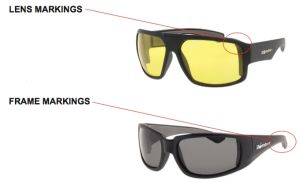Eye Protection for NETs
At a minimum, NET eye protection should meet American National Standards Institute (ANSI) D4 and Z87 standards. What do these standards mean?
Z87: ANSI certified for regular impact. For safety eyewear to pass the basic Z87 standard, it must pass the Drop Ball Impact Test. This test involves a steel ball (that is one inch in diameter and weighing roughly 2.4oz) dropped from a test height of 50 inches. For eyewear to pass, the lens and frames must remain intact. Eyewear rated at Z87+ are better, having passed the Drop Ball Impact Test as well as a High Mass Impact Test, High Velocity Impact Test, and a Penetration Test.
D4: ANSI certified for splashes and dust particles. Safety goggles are intended to protect eyes against dust, splash, and droplet hazards. Goggles form a protective seal around the eyes, preventing liquid, chemicals, or dust from entering under or around the goggles. Ventilated goggles allow air circulation while providing protection against airborne particles, dust, liquids, or light.
Z87 and D4 rating is the minimum recommended. Even better for NETs are safety eyewear that are ANSI rated Z87+ and D3-5, anti-fog, and include indirect ventilation around the eye area.
Volunteers may notice markings on safety eye protection that include:
| Z87 | ANSI certified for regular impact. |
| Z87+ | ANSI certified for high impact. |
| D3 | Droplets. |
| D4 | Splashes and dust particles. |
| D5 | Fine dust particles. |
| D3-5 | Indicates eyewear that protects against droplets (splash) and dust. |
| R | Protects against infrared light. |
| U (followed by a number) | Offers UV protection. The number indicates how much. |
| L (followed by a number) | These glasses have a visible light filter; the level is indicated by the number. You might see this on blue light-blocking glasses. |
| W | This mark indicates that the personal eye protection is safe to use while welding; commonly located on face shields. It could also be a manufacturer's mark. |
| Z87-2 | Reserved for prescription lenses on safety glasses. |
| N | Anti-fog coating. |
| K | Scratch resistant. |
| F | Impact rated 45.7 m/s. |
| 2C | UV protection with good color recognition. |
| 1,2 | More than 74.4% light transmission, but less than 100%. |
There are sometimes other markings on glasses, but they are often manufacturer marks or design/model numbers.
For more information on safety eyewear standards, visit: https://www.hexarmor.com/posts/what-do-lens-markings-and-z87-mean
